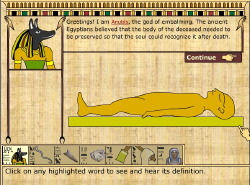Death
Suicide Forest
Aokigahara Forest near Mount Fuji is known throughout Japan as "suicide forest" because many go there to take their own lives. It has the highest suicide rate in Japan (which itself has one of the highest suicide rates in the world). Apparently it's pretty common to find people dead or dying as you wander through the forest. Signs with the number for a suicide hotline have now been posted on many of the trees.Other suicide hotspots around the world: The Golden Gate bridge is an obvious one. It's the most popular place to commit suicide in the US. In the UK, the welsh mining town of Bridgend has a reputation as a suicide hotspot, though I think it's the locals who commit suicide, rather than people purposefully traveling there for that purpose.
Then there's Overtoun Bridge in Dumbarton, Scotland which has a reputation as a suicide hotspot for dogs, due to the fact that in the past fifty years, fifty dogs have leapt off it to their deaths.
Posted By: Alex - Fri Mar 20, 2009 -
Comments (3)
Category: Death, Suicide
Ride Accidents
RideAccidents.com bills itself as "the world's single most comprehensive, detailed, updated, accurate, and complete source of amusement ride accident reports and related news."People falling and jumping from roller coasters, children drowning in water rides, men leaping leaping from cable cars with a bungee cord attached to them, thinking the bungee will stop them before they hit the ground, only to realize they misjudged the distance and the cord doesn't even have a chance to grow taut before they slam into the ground. It's all there!
Posted By: Alex - Wed Mar 04, 2009 -
Comments (3)
Category: Death
The Baiting Crowd
I believe that the social psychologist Leon Mann was one of the first to describe the phenomenon of the "baiting crowd." He did so in a 1981 article in the Journal of Personality and Social Psychology:A Puerto Rican handyman perched on a 10th floor ledge for an hour yesterday morning as many persons in a crowd of 500 on upper Broadway shouted at him in Spanish and English to jump. Even as cries of "Jump!" and "Brinca!" rang out, policemen pulled the man to safety from the narrow ledge at 3495 Broadway, the north-west corner of 143rd Street.
Mann identified five factors that contribute to the phenomenon: 1) the anonymity of being in a large crowd; 2) cover of darkness; 3) distance from the victim (but being close enough so that the person threatening suicide can still hear the cries urging him to jump); 4) duration of episode (people get bored and restless waiting too long); and 5) hot temperatures.
My theory is that people are okay until you gather them together into a crowd, at which point they transform into the lowest form of life imaginable.
Posted By: Alex - Sun Mar 01, 2009 -
Comments (4)
Category: Death, Psychology
Yorick’s Skull
Quite a few people, it seems, have bequeathed their skulls to theater companys. They figure that, while they may not have been talented enough to appear in a production of Hamlet during their life, once they're dead they've got the part of Yorick's skull covered. From tvtropes.org:So who's going to be the first to bequeath their skull to Weird Universe?
Posted By: Alex - Mon Feb 16, 2009 -
Comments (5)
Category: Death
Do-It-Yourself Coffin Kits
 If the cost of funerals has you down, consider building your own coffin. CoffinKits.com sells a simple pine coffin kit for $795. Though that seems like a lot to me. Surely it wouldn't cost more than $50 to get some plywood from Home Depot and make something entirely from scratch.
If the cost of funerals has you down, consider building your own coffin. CoffinKits.com sells a simple pine coffin kit for $795. Though that seems like a lot to me. Surely it wouldn't cost more than $50 to get some plywood from Home Depot and make something entirely from scratch. For the furry and feathered members of your family, there are options as well, such as the Farewell Burial Coffin Kit. Just the right size for your hamster, budgie or gerbil.
Posted By: Alex - Fri Feb 13, 2009 -
Comments (7)
Category: Death
Embalming Service
 There are a few things I find strange about the choices Snyder's Embalming Service made in the design of its website. For a start, the dancing skeleton at the top. Does it really set an appropriate tone? Referring to themselves as "the embalminator". Again, oddly wacky humor for an embalming service. But the weirdest thing is the decision to also advertise their Mangosteen fruit juice on the site. They say the fruit juice will "promote joint flexibility", but coming from an embalmer, I'm not sure that's a good thing.
There are a few things I find strange about the choices Snyder's Embalming Service made in the design of its website. For a start, the dancing skeleton at the top. Does it really set an appropriate tone? Referring to themselves as "the embalminator". Again, oddly wacky humor for an embalming service. But the weirdest thing is the decision to also advertise their Mangosteen fruit juice on the site. They say the fruit juice will "promote joint flexibility", but coming from an embalmer, I'm not sure that's a good thing.However, I do find their "tricks of the trade" section very informative. For instance, I'm dying to try out their cradle cap remedy:
Posted By: Alex - Tue Jan 27, 2009 -
Comments (5)
Category: Death
Online Mummification
 Learn the ancient Egyptian art of mummification at the University of Chicago's interactive mummification tutorial. Use a hook to remove the brain through the nose. Extract the internal organs and place them in canopic jars. Wrap the body in linen, etc.
Learn the ancient Egyptian art of mummification at the University of Chicago's interactive mummification tutorial. Use a hook to remove the brain through the nose. Extract the internal organs and place them in canopic jars. Wrap the body in linen, etc.This would make a nice companion to the Interactive Autopsy site I posted about a few weeks ago.
Posted By: Alex - Mon Jan 26, 2009 -
Comments (7)
Category: Death, Religion
The Camisards

Well, not all the time.
Consider the French Protestant dissenters known as the Camisards.
I learned about this historical incident from reading Robert Louis Stevenson's Travels with a Donkey. (You can find the entire text of the book here.) Stevenson traveled through the region once ruled by the Camisards, and evoked the romance of their rebellion.
There, a hundred and eighty years ago, was the chivalrous Roland, "Count and Lord Roland, generalissimo of the Protestants in France," grave, silent, imperious, pock-marked ex-dragoon, whom a lady followed in his wanderings out of love. There was Cavalier, a baker's apprentice with a genius for war, elected brigadier of Camisards at seventeen, to die at fifty-five the English governor of Jersey. There again was Castanet, a partisan in a voluminous peruke and with a taste for divinity. Strange generals who moved apart to take counsel with the God of Hosts, and fled or offered battle, set sentinels or slept in an unguarded camp, as the Spirit whispered to their hearts! And to follow these and other leaders was the rank file of prophets and disciples, bold, patient, hardy to run upon the mountains, cheering their rough life with psalms, eager to fight, eager to pray, listening devoutly to the oracles of brainsick children, and mystically putting a grain of wheat among the pewter balls with which they charged their muskets.
Pretty weird, huh? And right in Europe, not all that long ago.
The last sentence from Stevenson is particularly intriguing, since it conjures up comparisons to the Mai-Mai rebels in the Congo today, who believe that certain magical charms protect them against bullets; that their own bullets are invulnerable to counter charms; and that ritual cannibalism of their enemies is still a grand idea.
Once Europe had its own Mai-Mai's. Perhaps someday Africa will be rid of theirs.
Posted By: Paul - Thu Jan 22, 2009 -
Comments (10)
Category: Cannibalism, Death, Frauds, Cons and Scams, History, Historical Figure, Magic and Illusions and Sleight of Hand, Paranormal, Religion, War, Weapons, Foreign Customs, Africa, Europe, Eighteenth Century
Exploding Casket Syndrome
From Grave Matters by Mark Harris:
Posted By: Alex - Wed Jan 21, 2009 -
Comments (6)
Category: Death

| Who We Are |
|---|
| Alex Boese Alex is the creator and curator of the Museum of Hoaxes. He's also the author of various weird, non-fiction, science-themed books such as Elephants on Acid and Psychedelic Apes. Paul Di Filippo Paul has been paid to put weird ideas into fictional form for over thirty years, in his career as a noted science fiction writer. He has recently begun blogging on many curious topics with three fellow writers at The Inferior 4+1. Contact Us |




